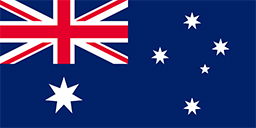Free Sample
Functional test of a detection device
Solution.pdf1. Give the five classes of fires and an example of each:
a. Class A -Ordinary Combustibles (Wood, paper)
b. Class B - Flammable Liquids (Oil, gasoline)
c. Class C - Energized Electrical Equipment (equipment connected to electrical source)
d. Class D - Metals (Potassium, sodium)
e. Class K - Fires involving cooking oils, combustible cooking media
2. Give the four components of the fire tetrahedron. In general, why is this important to fire protection professionals to understand?
3. What is the minimum distance from the peak of a smooth, peaked or shed ceiling for placement of a spot-type detector, why?
4. There are several requirements for household smoke alarms according to NFPA 72. What are three of these? Be specific and use the required terminology?
5. What are two requirements using "proper engineering judgment" for the correct placement of automatic detectors?
6. What is the maximum distance on a wall that a wall mounted detector may be mounted from the ceiling? Why?
7. What is a functional test of a detection device? Describe how this is performed. What does it establish?
8. What is a sensitivity test of a detection device? Describe how this is performed. What does it establish?
9. Discuss the technology incorporated into an ionization smoke detector. Be specific, use correct terminology, and use diagrams if they assist you with your discussion.
10. Discuss the technology incorporated into an Photoelectric smoke detector. Be specific, use correct terminology, and use diagrams if they assist you with your discussion.
11. What is the difference between a fixed temperature detector and a rate of rise detector?
12. List two types of flame detectors (technologies)?
13. Specifically (using the correct terms), what is the difference between a single action and double action annual pull station? What is an example of both?
14. Describe and discuess the operation of two different types of fixed temperature heat detectors.
15. Describe and discuss the operation of two different types of rate of rise detectors.
16. Describe and discuss the operation of two non-residential smoke detectors.
17. In general, discuss the differences between public-mode and private-mode requriements for notification appliances.
18. What is the minimum soud level required above ambient sound level for a general building evacuation?
19. What is the minimum sound level required for sleeping rooms?
20. In a dorm, audible warning devices have been installed only in the hall way. The doors into the dorms have sound deadening/reduction of 20dB. What is the minimum dB level for the hallway audible device to meet the code to awaken sleeping individuals in the dorm room with the door closed?
21. What does parallel wiring refer to?
22. If you were charged with installing a combination visible and audible alarm which requirements would you follow for placement? What considerations would you apply?
23. Supervisory switches indicate what?
24. What is the purpose of fire alarm systems?
25. What is a supervisory signal?
26. What is a trouble signal?
27. What are the backup power requirements for the fire alarm systems?
28. What is a temporal alarm pattern? Is it coded or non-coded?
29. Identify the type of fire extinguisher shown to the right. Explain how the agent is discharged, describe the types of agents that could be used in this configuration, and identify what classes of fire could this be used for?
30. Identify the type of fire extinguisher shown to the right. Explain how the agent is discharged, describe the types of agents that could be used in this configuration, and identify what classes of fire could this be used for?
31. Identify the type of fire extinguisher shown to the right. Explain how the agent is discharged, describe the types of agents that could be used in this configuration, and identify what classes of fire could this be used for?
32. Identify the type of fire extinguisher shown to the right. Explain how the agent is discharged, describe the types of agents that could be used in this configuration, and identify what classes of fire could this be used for?
33. List the travel distances for each class of extinguisher:
34. Be specific and describe the three tests that are used for Class A ratings
35. Be specific, and describe the test for Class B rating.
36. Be specific, and describe the test for Class C rating.

Get Assignment Help Now...!
Subjects We Offer
- Engineering Assignment Help
- MATLAB Assignment Help
- Mechanical Engineering Assignment Help
- Civil Engineering Assignment Help
- Computer Science Assignment Help
- Electrical Engineering Assignment Help
- Electronics Assignment Help
- Economics Assignment Help
- Management Assignment Help
- Do My Assignment
- Cheap Assignment Help
- Programming Assignment Help
- Law Assignment Help
- Assignment Provider
- Finance Assignment Help
- Python Assignment help
- Healthcare Management Assignment Help
- Computer Network Assignment Help
- History Assignment Help
- Industrial Engineering Homework Help
- IT Management Assignment Help
- Nursing Assignment Help
- Operating System Assignment Help
- Statistics Assignment Help
- Material Science Assignment Help
- Mechanical Engineering Homework Help
- University Assignment Help
- Agriculture Engineering Homework Help
- ATHE Courses Assignment Help
- Capital Budgeting Assignment Help
- BTEC Assignment Help
- HND Assignment Help
- Material Science Assignment Help
- Psychology Assignment Help
- Resit Assignment Help
- Computer Architecture Assignment Help
- Data Structure Assignment Help
- Database Assignment Help
- PHP Assignment Help





 +61-4-8002-4016
+61-4-8002-4016
 Australia
Australia  Brazil
Brazil  Canada
Canada  Hongkong
Hongkong  India
India  Ireland
Ireland  Jorden
Jorden  Kuwait
Kuwait  Malaysia
Malaysia  New Zealand
New Zealand  UAE
UAE  USA
USA  UK
UK  Qatar
Qatar  Saudi Arabia
Saudi Arabia  Singapore
Singapore  Taiwan
Taiwan  South Africa
South Africa 
